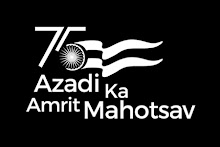India is set to roll out the red carpet for foreign tourists. The Centre on Monday cleared a slew of measures, including extending visa on arrival (VoA) to 40 countries, establishing an online application system for visas and facilitating VoA for pensioners and those attending conferences.
This means foreign tourists will be able to apply for an Indian visa from their homes while citizens of 40 countries, including the US, the UK, Germany, Brazil, Russia and China, can avail of visa on their arrival on Indian shores.
The government has agreed to extend visa on arrival (VoA) to all foreign travellers above 60 years of age and cut down the time taken to give visas to groups keen to attend conventions.
The ministries of tourism and home affairs have been tasked with preparing the roadmap since initiating the visa on arrival scheme will require a large amount of infrastructure and manpower. So far, citizens of around 11 countries, including Japan, New Zealand and Vietnam, are allowed visa on arrival. The government is closely reviewing the online application systems adopted by Sri Lanka where only electronic visas are issued to tourists on short visits.
A consensus was reached on the issues during a high level meeting called by the Planning Commission in Delhi on Monday.
Among those who attended the meeting were the national security advisor and representatives from the PMO, Intelligence Bureau, and ministries of external affairs, home and tourism.
According to the minister, there are many senior citizens, including pensioners, who want to visit India. The government has decided to relax visa norms for groups of four such foreign tourists. The home ministry was of the view that visa on arrival could be expanded to include more countries, but there is a shortage of staff.
Another suggestion was to bring down the number of categories of visas from the existing 16 to just three—employment, business and visitor. It was also decided that visa on arrival facility would be extended to more airports like Goa, Gaya, Chandigarh and Amritsar which have a large flow of foreign tourists. At present, the facility is available at international airports of Mumbai, Delhi, Chennai, Kolkata, Kochi, Hyderabad, Bangalore and Thiruvananthapuram.
The move has been initiated after growing realization that the tourism sector can act as a bridge in the current account deficit crisis that India is facing. During 2012-13, CAD was at an all-time high of 4.8% of GDP, or $88.2 billion. The government proposes to bring it down to $70 billion or 3.8% of GDP.
According to sources, Congress vice-president Rahul Gandhi had discussed relaxing visa norms for more countries with top officials of ministries like tourism. In 2012, India received 6.58 million foreign tourists, up 4.3% over the previous year. India’s foreign exchange earnings in 2012 from tourists were $17.74 billion, showing an increase of 7.1% year-on-year. However, the last few months have seen a dollarless growth.
The countries for which visa on arrival facility will be extended include the US, the UK, Canada, Brazil, Australia, the UAE, Saudi Arabia, Germany, France, Italy, Sweden, the Netherlands, Switzerland, Spain, Belgium, Austria, Denmark, Poland, Norway and Ireland.
This means foreign tourists will be able to apply for an Indian visa from their homes while citizens of 40 countries, including the US, the UK, Germany, Brazil, Russia and China, can avail of visa on their arrival on Indian shores.
The government has agreed to extend visa on arrival (VoA) to all foreign travellers above 60 years of age and cut down the time taken to give visas to groups keen to attend conventions.
The ministries of tourism and home affairs have been tasked with preparing the roadmap since initiating the visa on arrival scheme will require a large amount of infrastructure and manpower. So far, citizens of around 11 countries, including Japan, New Zealand and Vietnam, are allowed visa on arrival. The government is closely reviewing the online application systems adopted by Sri Lanka where only electronic visas are issued to tourists on short visits.
A consensus was reached on the issues during a high level meeting called by the Planning Commission in Delhi on Monday.
Among those who attended the meeting were the national security advisor and representatives from the PMO, Intelligence Bureau, and ministries of external affairs, home and tourism.
According to the minister, there are many senior citizens, including pensioners, who want to visit India. The government has decided to relax visa norms for groups of four such foreign tourists. The home ministry was of the view that visa on arrival could be expanded to include more countries, but there is a shortage of staff.
Another suggestion was to bring down the number of categories of visas from the existing 16 to just three—employment, business and visitor. It was also decided that visa on arrival facility would be extended to more airports like Goa, Gaya, Chandigarh and Amritsar which have a large flow of foreign tourists. At present, the facility is available at international airports of Mumbai, Delhi, Chennai, Kolkata, Kochi, Hyderabad, Bangalore and Thiruvananthapuram.
The move has been initiated after growing realization that the tourism sector can act as a bridge in the current account deficit crisis that India is facing. During 2012-13, CAD was at an all-time high of 4.8% of GDP, or $88.2 billion. The government proposes to bring it down to $70 billion or 3.8% of GDP.
According to sources, Congress vice-president Rahul Gandhi had discussed relaxing visa norms for more countries with top officials of ministries like tourism. In 2012, India received 6.58 million foreign tourists, up 4.3% over the previous year. India’s foreign exchange earnings in 2012 from tourists were $17.74 billion, showing an increase of 7.1% year-on-year. However, the last few months have seen a dollarless growth.
The countries for which visa on arrival facility will be extended include the US, the UK, Canada, Brazil, Australia, the UAE, Saudi Arabia, Germany, France, Italy, Sweden, the Netherlands, Switzerland, Spain, Belgium, Austria, Denmark, Poland, Norway and Ireland.




No comments:
Post a Comment